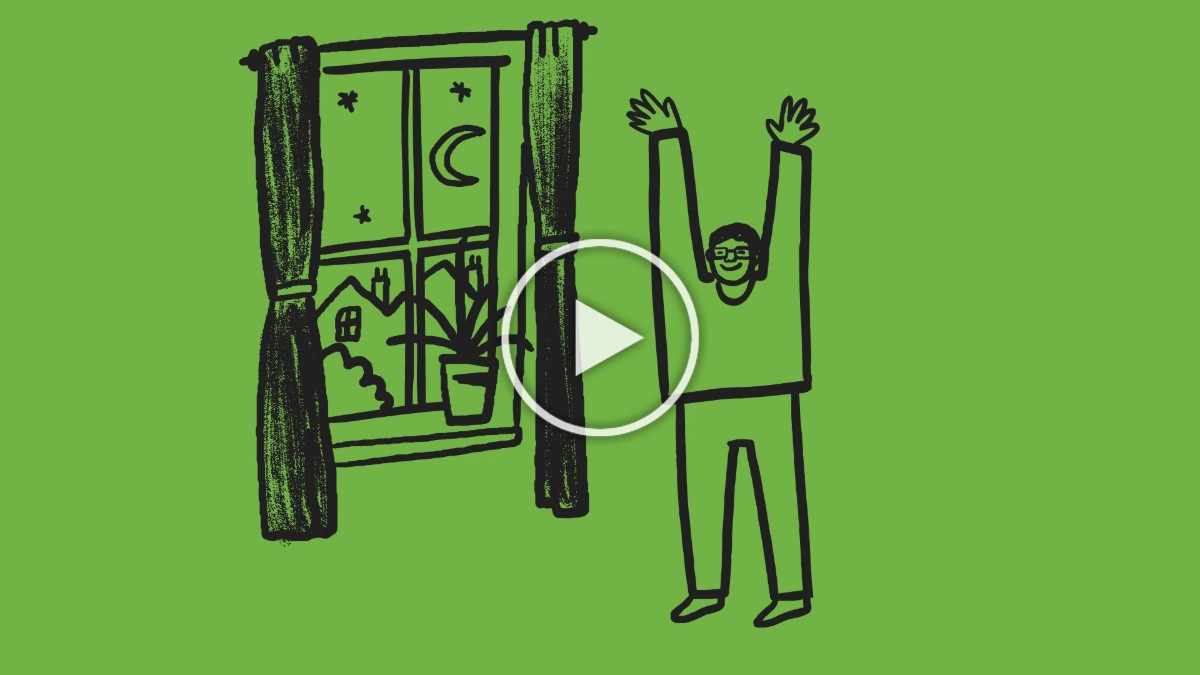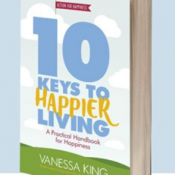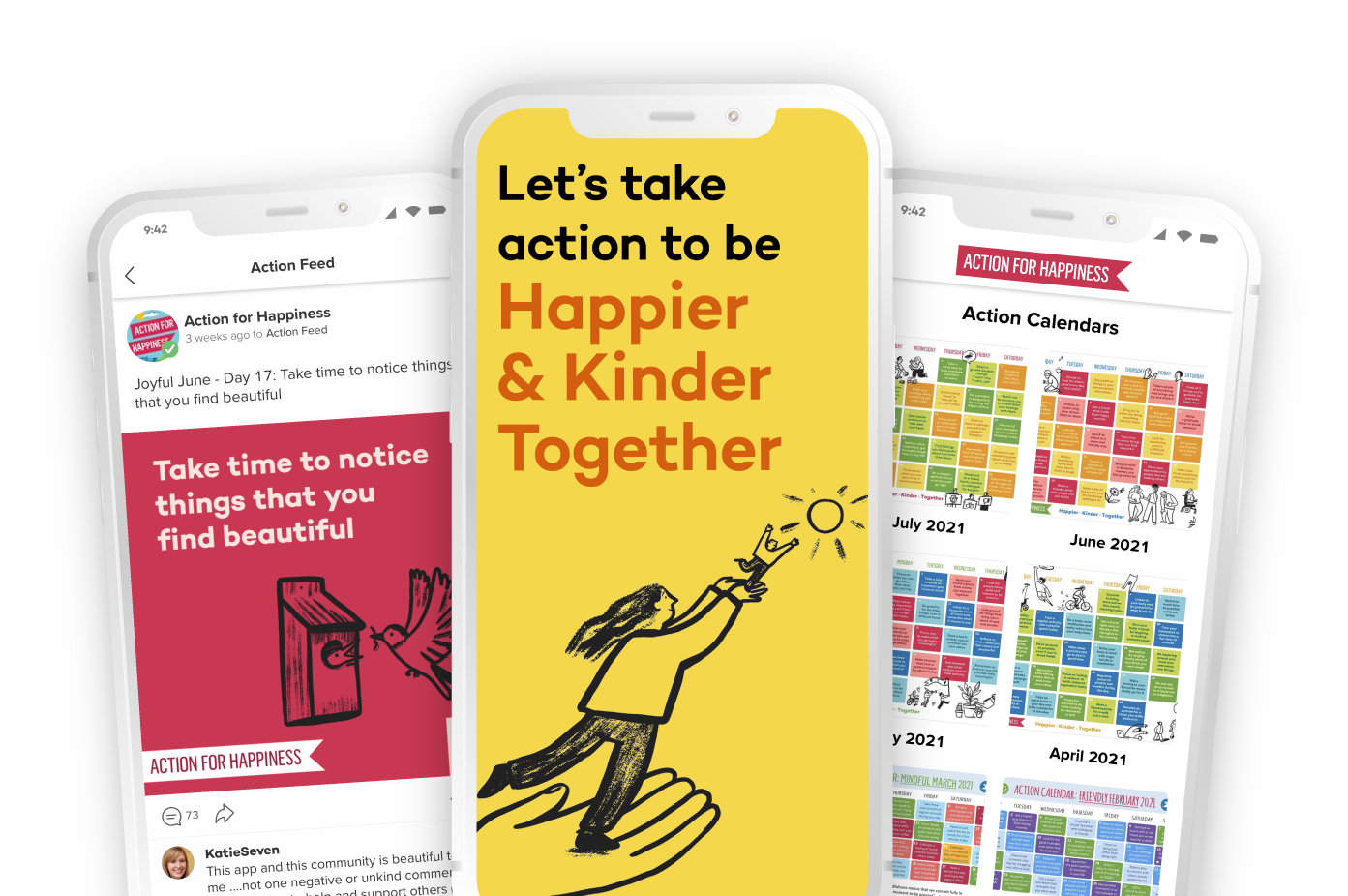Exercising
Take care of your body
Taking care of your body is good for your mind.
They’re connected!
There are lots of ways we can look after ourselves physically - exercising, moving more during the day, getting enough rest, eating nourishing food, staying hydrated and getting out into daylight. These all directly impact how well we feel and function. They can be instant mood boosters as well as being good for our mental and physical health longer term.
An extensive body of scientific research is showing the many benefits of exercise for our psychological health and happiness [1]. Exercise and being physically active can help us manage, treat and even prevent depression and anxiety [2]. It can boost our confidence, help us manage stress, and help us sleep and think better too – improving how well our brain functions [3]. It’s not all about running marathons - there are simple things we can all do to be more active each day. Walk, run, dance, swim, cycle, yoga…the list is almost endless and it all can make a difference to how we feel!
Getting enough, good quality sleep is also vital for our physical, emotional and psychological functioning [4], but it’s not always easy when our minds are busy with our to-do lists and worries, or technology is tempting us to stay awake and online. Investing in your rest isn’t a luxury, it’s important to help you feel happier and there are lots of actions you can try that can help.
Why not take action right now? Join Abi, our coach from the 10 Days of Happiness program, for a short video and a quick activity to help you take care of your body today.
Be physically active
Moving matters for your mind. Being physically active is a quick and easy way to boost your mood and supports the health and functioning of your brain. According to some scientists exercising improves how well the brain works and helps keep it in good condition! [5]
Human beings evolved to move, but our modern lifestyles mean many of us are less active than our bodies were designed for. Don’t worry if you aren’t sporty – you don’t need to be! One of the simplest ways of being physically active is to take a brisk walk, or you could dance, get vigorous with the housework, swim or cycle. Whatever you enjoy most.
Aim to be active for at least 30 minutes most days (more if you can) [6]. If it’s easier, break it down into small chunks, say 10 minutes at a time. And if you haven’t been very physically active up until now - don’t worry - it’s never too late to get started and build up to the recommended daily amount.
What ways of being physically active do you most enjoy?


Sit less
When we are busy, sat at our computers all day, or we’re feeling down or anxious, it can be easy to spend long stretches of time sitting down, perhaps going straight from our desks to our sofa and then bed. Research is now showing that sitting for long periods each day, over time, can be detrimental to our psychological health as well as our physical wellbeing, even if we exercise [7]. So, as well as exercising regularly, we need to incorporate many moments of movement over the course of our days. For example, once an hour, spend a minute having a good stretch or twist. Stand up every time you use your phone or even better walk and talk! Use the time waiting for the kettle to boil to do a few squats, kitchen worktop push-ups or balance on your tiptoes. Moving more in whatever way you can manage. Every little counts!
How can you include more moments of movement into your day?
Invest in rest
Sleeping well is essential for our bodies, mood and mind [8]. Getting enough sleep helps us think better, enables us to more easily manage our emotions and supports our physical health including our immunity, but it’s not always easy [9]. Human beings are the only creatures to have electric light so it’s easy for us to stay awake and of course our devices can keep our minds whirring late into the night. As a result, many of us are chronically sleep-deprived and need an alarm to wake up.
The amount of sleep we need varies, but experts suggest most adults should aim for 7-9 hours. There is a lot we can do to invest in our rest. For example:
- Set an alarm for bed - An hour before you want to go to sleep set a gentle alarm to remind yourself to wind down and get ready for bed.
- Have a wind-down routine – e.g. switch off your devices, dim the lights, read something calming.
- Set up your space for sleep – Block outside light or use an eye mask; limit noise or get some ear plugs; eliminate tech and keep the temperature cool.
How much sleep do you need to feel well rested? What’s something you can do to invest in your rest?


Switch off your mind for sleep
Busy or racing minds can get in the way of a good night’s sleep and it’s not always easy to switch-off. Whether it’s tomorrow’s to-do list, worries about the day that’s just gone or the future, or our devices keeping our minds whirring late into the night. To make sure we get enough sleep, we don’t just need to turn off the lights, but also have some ways to calm our minds.
Here are some actions that can help…
- Unplug from tech – ban your phone, computer and tablet from the bedroom at night (or have a place to put them away)
- Go old school – get a proper alarm clock (a quiet one, without lights) and read a book rather than go online.
- Practice gratitude – when you get into bed reflect on three good things from your day, or if things are tough – what was one moment from the day that was better than the rest?
- Scrunch and release your body – It’s called progressive muscle relaxation. Start with one body part – like your left foot or hand – tense it up as hard as you can, then slowly relax it, breathing out if you can, noticing how that feels. Then do the same with the right hand or foot, then your left leg or arm and so on moving through your body parts in turn.
- Play alphabet games – Switch your mind off by giving it something absorbing but not overly stimulating to do, like thinking of a different animal, actor, sports person or place name for each letter of the alphabet in turn from A through to Z. (It beats counting sheep!)
What’s something you can try to help your mind switch off and sleep?
Nurture your connection with nature
Being outside, in the daylight, in or near greenery or water - spaces that we find pleasing - can help us feel happier, reduce stress and boost our sense of vitality [10]. Exercising outdoors in urban or natural settings each had positive benefits for mood and stress levels, but natural environments were associated with greater mental restoration [11]. Other studies have shown that we generally feel happier in natural environments than indoors or in those that are built up [12].
Daylight, especially in the morning, helps to regulate our body clock which in turn helps us sleep. Sunlight on our skin produces vitamin D – important for both physical health and happiness [13].
Visible greenery, both indoors and out, has been shown to reduce stress and increase our concentration and productivity [14]. Even if we live in a town or city, there are lots of different ways we can nurture our connection with nature.
- Go for a nature walk – even if you are in a city. Take time to notice different shades of green, the beauty of a bare branch or spot birds and other wildlife.
- Notice the resilience of nature – the flower or blades of grass poking up through a crack in the ground; trees that have withstood the wild weather; insects that help pollinate our plants.
- Cultivate greenery wherever you are – grow herbs in your kitchen, plant a window box or a cultivate greenery in a patch of earth outside.
- Pause by a pond – find some pleasant water to sit or stand by and notice the reflections on its surface.
- Take care of the natural world – pick up litter, join a gardening group, or volunteer for a conservation project nearby.


Eat good mood food
When we are busy, tired or stressed – it’s easy to get in the habit of reaching for unhealthy snacks or junk foods, often without realising. Whilst these may feel comforting or give us a boost in the moment, they can go on to negatively impact our mood and longer-term our overall health. Sugary foods and refined carbohydrates can be especially bad for this – giving us a mood or energy high then causing us to crash down, feel sleepy, irritable or both and that can make us reach for another sugary boost [15].
We need a varied diet, ideally mostly of unprocessed foods including vegetables and fruit. Foods that are as close to their natural state tend to have more nutrients and fibre which support health and happiness longer-term. Nutrients such as omega oils (found in oily fish, some seeds e.g. linseeds, nuts, olive oil, avocados and eggs) are associated with better moods and a lower likelihood of depression. Vitamins and minerals are important for how we feel too. The range of B vitamins for example are thought to be important for the health of our brain and nervous system and so help keep our minds functioning well [16]. These are found in whole grains, yeast, mushrooms and dairy products.
- Eat a rainbow – a simple way to ensure you get a range of vitamins and other important micro-nutrients is to eat a range of different coloured natural fruits, vegetables, whole grains and other foods every day
- Stock up on good snacks – avoid temptation by keeping sugary snacks and drinks out of the house (or workplace) and stock up on tasty natural treats instead. Make these easy to access when you need a boost. These might be delicious colourful fruits, nuts, or crunchy vegetable sticks that you prepare and leave in the fridge.
- Develop your cooking skills – preparing food from scratch needn’t be difficult, expensive or time consuming and it means you’ll know exactly what you are eating. There are loads of on- and offline resources that can show you what you’ll need and how to do it. Cooking can be fun and creative!
References
1 Hogan, C.L., Catalino, L.I., Mata, J. & Fredrickson, B.L. (2015) Beyond emotional benefits: Physical activity and
sedentary behavior affect psychosocial resources through emotions. Psychology & Health, 30, 3, 354-369; Mutrie, N. & Faulkner, G. (2004). Physical activity: Positive psychology in motion. In Linley, P. A. & Joseph, S. (Eds.), Positive Psychology in Practice (pp. 146-164). Hoboken, NJ: Wiley.
2 Petruzzello, S.J. (2012). The ultimate tranquilizer? Exercise and its influence on anxiety. In The Oxford Handbook of Exercise Psychology Ed. Acevedo, E.O.; Ratey, J. & Hagerman, E. (2008) Spark! - How exercise will improve the performance of your brain. Quercus, London.; Mutrie, N. & Faulkner, G. (2004). Physical activity: Positive psychology in motion. In Linley, P. A. & Joseph, S. (Eds.), Positive Psychology in Practice (pp. 146-164). Hoboken, NJ: Wiley.; Biddle, S. J. H. & Mutrie, N. (2001). Psychology of physical activity: Determinants, well being, and interventions. London: Routledge.
3 Ratey, J. J. (2008). Spark: The Revolutionary New Science of Exercise and the Brain. New York, NY: Little Brown and Co.
4 Steptoe, A., O'Donnell, K., Marmot, M., & Wardle, J. (2008) Positive affect, psychological well-being, and good sleep. Journal of Psychosomatic Research, Volume 64, Issue 4.
5 Ratey, J. J. (2008). Spark: The Revolutionary New Science of Exercise and the Brain. New York, NY: Little Brown and Co.
6 WHO Guidelines Nov 2020 - https://www.who.int/news-room/fact-sheets/detail/physical-activity
7 Hamer, M., Coombs, N., Stamatakis, E. (2014) Associations between objectively assessed and self-reported
sedentary time with mental health in adults: an analysis of data from the Health Survey for England. BMJ Open
2; Hiles, S., Lamers, F., Milaneschi, Y., & Penninx, B. (2017). Sit, step, sweat: Longitudinal associations between physical activity patterns, anxiety and depression. Psychological Medicine, 47(8), 1466-1477.; Puig-Ribera, A., Martínez-Lemos, I., Giné-Garriga, M., González-Suárez, Á. M., Bort-Roig, J., Fortuño, J., ... & Gilson, N. D. (2015). Self-reported sitting time and physical activity: interactive associations with mental well-being and productivity in office employees. BMC Public Health, 15(1), 72.
7 Teychenne M, Ball K, Salmon J. Physical activity, sedentary behavior and depression among disadvantaged women. Health Educ Res. 2010;25(4):632–44; van Uffelen, J.G.Z., van Gellecum, Y.R., Burton, N., Peters, G., Heesch, K., & Brown, W. J. (2013) Sitting-time, physical activity and depressive symptoms in mid-aged women. American Journal of Preventive Medicine, 45(3), pp. 276-281; McDowell, C.P., Dishman, R.K., Gordon, B.R., & Herring,M.P. (2019) Physical Activity and Anxiety: A Systematic Review and Meta-analysis of Prospective Cohort Studies, American Journal of Preventive Medicine, 57 (4); 545-556.
8 Chow CM. Sleep and Wellbeing, Now and in the Future. International Journal of Environmental Research and Public Health. 2020; 17(8):2883.
9 Ratey, J.J. & Manning, R. (2014) Go Wild: Free your body and mind from the afflictions of civilization. Little, Brown & Company. New York.; Steptoe, A., O'Donnell, K., Marmot, M., & Wardle, J. (2008) Positive affect, psychological well-being, and good sleep. Journal of Psychosomatic Research, Volume 64, Issue 4.
10 Ryan, C. O., et al., (2014). Biophilic design patterns: emerging nature-based parameters for health and well-being in the built environment. ArchNet-IJAR: International Journal of Architectural Research; Gladwell et al., (2012). The effects of views of nature on autonomic control. European Journal of Applied Physiology; Seresinhe, C.I., et al., (2019). Happiness is greater in more scenic locations. Scientific Reports; Beute, F., & de Kort, Y. A. (2018). The natural context of wellbeing: Ecological momentary assessment of the influence of nature and daylight on affect and stress for individuals with depression levels varying from none to clinical. Health & Place, 49, 7-18.
11 Gidlow, C.J., et al., (2016). Where to put your best foot forward: Psycho-physiological responses to walking in natural and urban environments. Journal of Environmental Psychology.
12 MacKerron, G, and Mourato, S. (2013) Happiness is greater in natural environments. Global Environmental Change. 23 (5): 992-1000,
13 Knoop, M., Stefani, O., Bueno, B., Matusiak, B., Hobday, R., Wirz-Justice, A., & Norton, B. (2020). Daylight: What makes the difference?. Lighting Research & Technology, 52(3), 423-442.; Beute, F., & de Kort, Y. A. (2014). Salutogenic effects of the environment: Review of health protective effects of nature and daylight. Applied Psychology: Health and well‐being, 6(1), 67-95.
14 Hall,C., & Knuth, M. (2019) An Update of the Literature Supporting the Well-Being Benefits of Plants: A Review of the Emotional and Mental Health Benefits of Plants. Journal of Environmental Horticulture 37 (1): 30–38.
15 Hefferon, K. (2013) Positive Psychology and the Body: The Somatopsychic Side to Flourishing. McGraw Hill
16 Kennedy D. O. (2016). B Vitamins and the Brain: Mechanisms, Dose and Efficacy--A Review. Nutrients, 8(2), 68.; Young, L. M., Pipingas, A., White, D. J., Gauci, S., & Scholey, A. (2019). A Systematic Review and Meta- Analysis of B Vitamin Supplementation on Depressive Symptoms, Anxiety, and Stress: Effects on Healthy and & 'At-Risk' Individuals. Nutrients, 11(9), 2232.


Take the 10 Keys to Happier Living online coaching programme.











